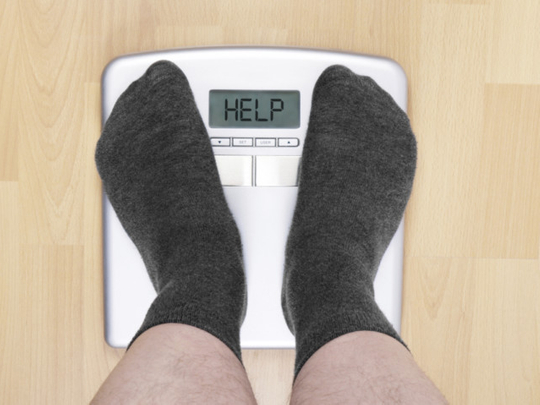
For many struggling with obesity, taking one of the newly approved prescription medications for weight loss (marketed as Qsymia, Belviq and Contrave) feels like climbing a mountain with a walking cane — it’s a little help, but not enough. And bariatric surgery — a permanent replumbing of the intestinal tract that is expensive and carries the risks of major surgery — feels like a bit too much help.
Could a water balloon be the solution?
The water balloon diet sounds like a new weight-loss gimmick, but at its heart is a medical device: the gastric balloon, several of which are expected to be considered by the Food and Drug Administration as weight-loss aids in the next year or so.
The gastric balloon goes down the throat, is inflated with fluid, and sits in the stomach. By taking up space, the device is designed to create a sensation of fullness, help a patient develop habits of portion control, and aid in weight loss. A new study suggests that, as part of a structured programme of diet and exercise, the gastric balloon may help obese people lose more weight than is possible with diet and exercise alone.
It’s not an entirely new idea. The FDA first approved a gastric balloon in 1985. But the endoscopically implanted device appears to have lost out to a more aggressively marketed and vigorously embraced means of weight-loss, the gastric band.
At the yearly meeting of the American Society for Bariatric and Metabolic Surgery held recently in Boston, researchers presented new studies of two gastric balloon-type devices: the Duo Intragastric Balloon (designed by ReShape Medical), and a new-generation gastric balloon called the Elipse (designed by Allurion Technologies). Other device manufacturers are working on inflatable gastric balloons as well.
The Duo is implanted in the stomach using an endoscopic device — no cutting and stitching — in an eight-minute procedure during which the patients is sedated. In a roughly 14-minute procedure, it is retrieved the same way when its present design life of 24 weeks is up.
In an eight-site trial underwritten by ReShape and submitted to the FDA as part of the device-approval process, 187 participants with body-mass indices (BMI) of 30 to 40 had the Duo device implanted, and got a diet and exercise plan and monthly counselling and checkups for 24 weeks. Also, 139 participants got just a diet and exercise plan and monthly counselling.
At the end of six months, participants who got the Duo balloon lost at least, on average, about 25 per cent of their excess weight, compared with an average of 11 per cent excess-weight loss in those who got diet, exercise and counselling alone. And close to half of the participants who got the Duo balloon lost at least a quarter of their excess weight.
On both measures, the weight loss difference between the Duo group and the control group exceeded substantially the standards set by the FDA for minimum effectiveness.
Testing of the Elipse device is at a much earlier stage: Bariatric surgeons this week heard the results of a “first human experience” with the novel device. The Elipse is designed to be swallowed and filled with water through a tiny catheter that trails behind. It was designed to dissolve after six weeks (though longer-lasting devices are expected to be tested). And once dissolved, the device is expected to be passed from the body in stool.
All eight of the first patients to get the device were able to swallow it, and the device’s proper positioning, once filled with bacteriostatic water, was confirmed in all eight cases. While the initial group of subjects was not prescribed any exercise or diet plan, they lost a little over 2.5 kilograms in six weeks.
Neither device came without discomfort. Seven of eight patients getting the Elipse experienced nausea, and five vomited in the first week after the device was implanted. Nausea, vomiting and/or abdominal discomfort was common among those who got the Duo device as well, although it was reported to abate over the first several days after implantation.
Fifteen percent of the 264 participants who had the Duo implanted (those in the study’s placebo group were later given the option of getting the Duo) asked to have it removed early. And despite an absence of physical symptoms, one of eight patients who had the Elipse device implanted asked researchers to puncture it because “she no longer enjoyed eating.” And in nearly one in three cases, researchers observed gastric ulcers upon retrieval of the Duo balloon.
A design change, researchers reported, drove that rate down to 10 per cent.
If it wins FDA approval, said Dr Jaime Ponce, the lead researcher on the trial of the ReShape device, the Duo balloon could be available late next year. Though it can be implanted by gastroenterologists, Ponce said that physicians offering it must also provide weight loss counselling and encourage exercise.
With about a third of American adults falling in the obese category and limited tools to help them lose their excess weight, “the FDA is more open to looking for options”, said Ponce, a former president of the bariatric surgery society and medical director of Hamilton Medical Center’s bariatric surgery programme. For patients who don’t want or aren’t able to tolerate bariatric surgery — or those who may want more than prescription medications to aid their weight loss — a gastric balloon may offer an interim option, he said.
Cost will be an issue, because insurance reimbursement for these devices may be slow to come. Neither company has indicated how much it will charge for devices if they are approved for marketing by the FDA. But Ponce predicted that the will be $5000 (Dh18,350) to $10,000.
–Los Angeles Times










